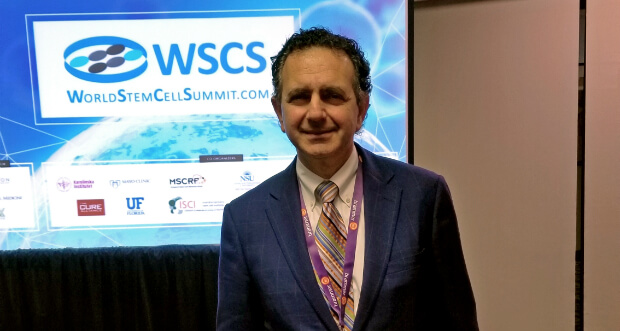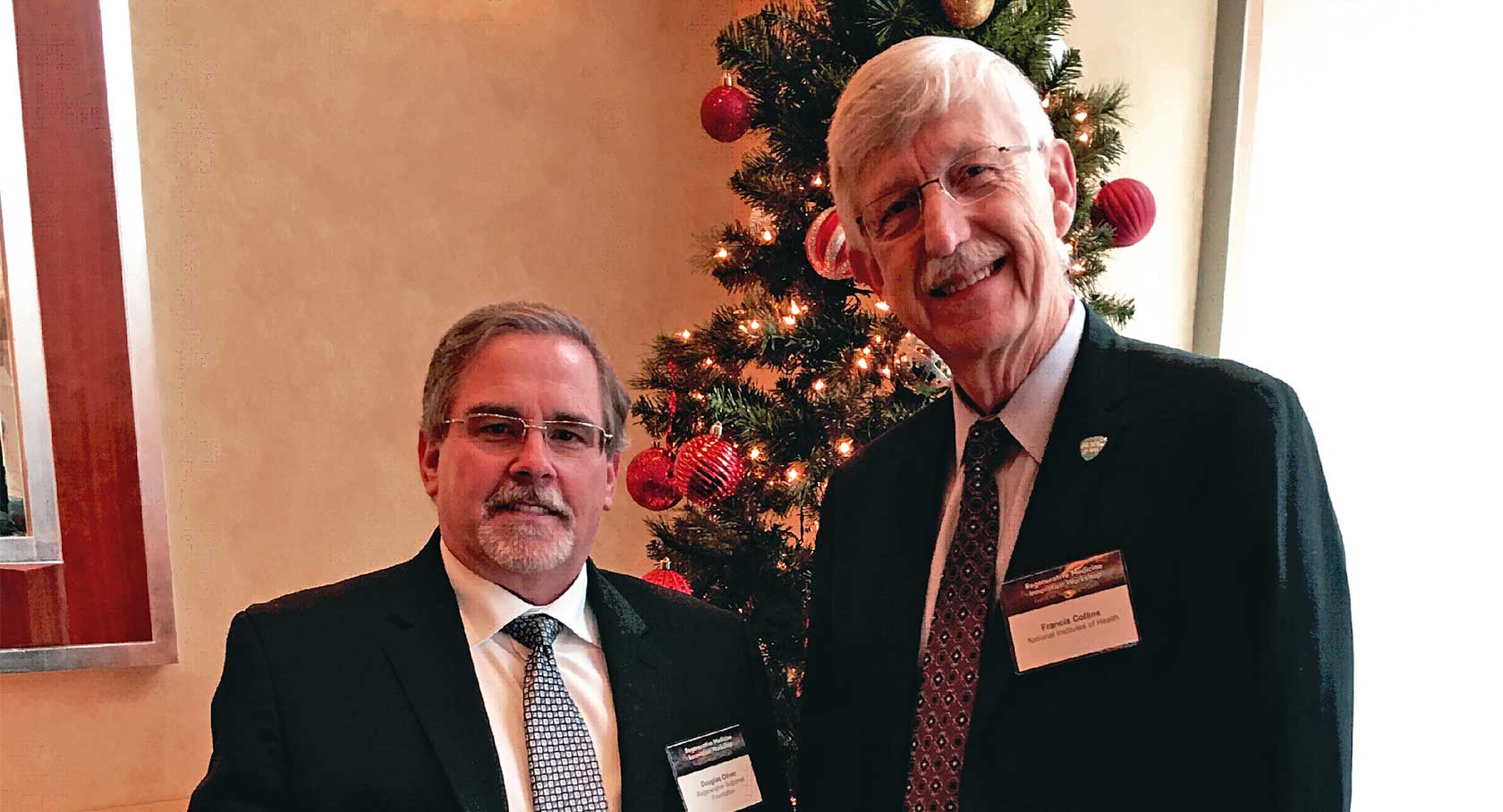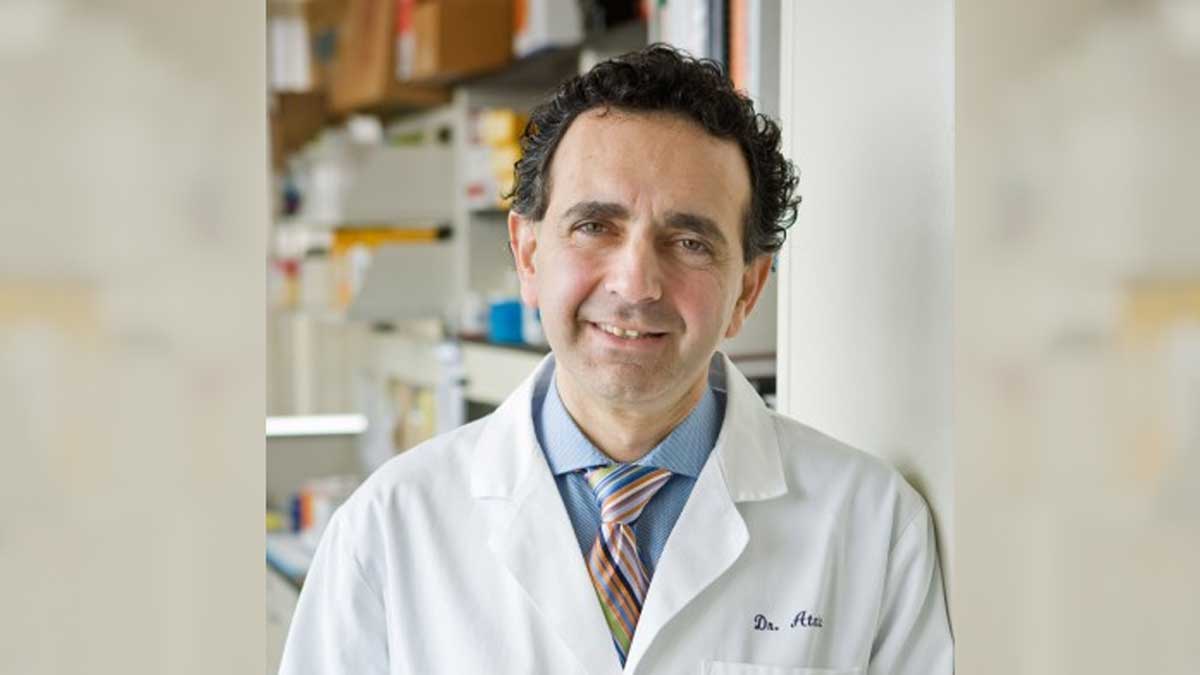
South Florida News Service
(Photo credit: Nick Rodriguez)MIAMI-January 25, 2018 – Dr. Anthony Atala, director of the Wake Forest Institute for Regenerative Medicine and the W.H. Boyce professor and chair of the Department of Urology at Wake Forest University, spoke about regenerative medicine in four different sessions at the 13th World Stem Cell Summit in Downtown Miami.
A practicing surgeon and researcher in the area of regenerative medicine, Atala’s work focuses on growing new human cells, tissues and organs. He also works closely with U.S. Army officials to help wounded soldiers.
Among the awards he has received for his work include the Christopher Columbus Foundation Award, World Technology Award in Health and Medicine, Edison Science/Medical Award for his work in 3-D bioprinting as well as the Rocovich Gold Medal.
In 2009, he was identified as one of 14 pioneers of medical progress in the 21st Century by U.S. News & World Report.
South Florida News Service: What are some of the biggest differences you see from when you started researching to today?
Dr. Anthony Atala: When I started researching 28 years ago, there weren’t many people. We were a handful of people pursuing this research. We look at today, and it’s now being recognized worldwide and we also have researchers from all over the world.
Do you find this event important to attend?
Yes. It’s important for the exchange of information—to make sure everyone knows what’s going on so we can help advance the field.
What is the level of involvement the Department of Defense has in your research projects?
The Department of Defense is very much involved in these different programs. There are actually weekly calls with all these projects that are moving on to the clinic and are going towards FDA regulation.
Do you consider the FDA an obstacle when trying to get technologies approved?
In my perspective, the FDA is not an obstacle. It’s just a necessary process we need to go through.
What is the thing you want to achieve the most with your research?
The achievement of solid organs, like the kidney, heart and lungs. Those are the organs we really want to get to, and it’s a process. The challenge for this is vascularization, the ability for these organs to be well fed through blood vessels.
How many technologies have gone to patients in one of your programs?
In our Regenerative Medicine for the Wounded Warrior program we currently have 18 different technologies that have reached patients.
What is one of the biggest challenges you face today?
The achievement of solid organs, like I mentioned earlier is one of the biggest challenges. Also having enough funds.
If you had $100 million for regenerative medicine, what would you use it towards?
I really think it’s important to tackle diseases that have the most impact on the population. Also, to create additional investments in regenerative medicine as a field, since the field needs more money.



